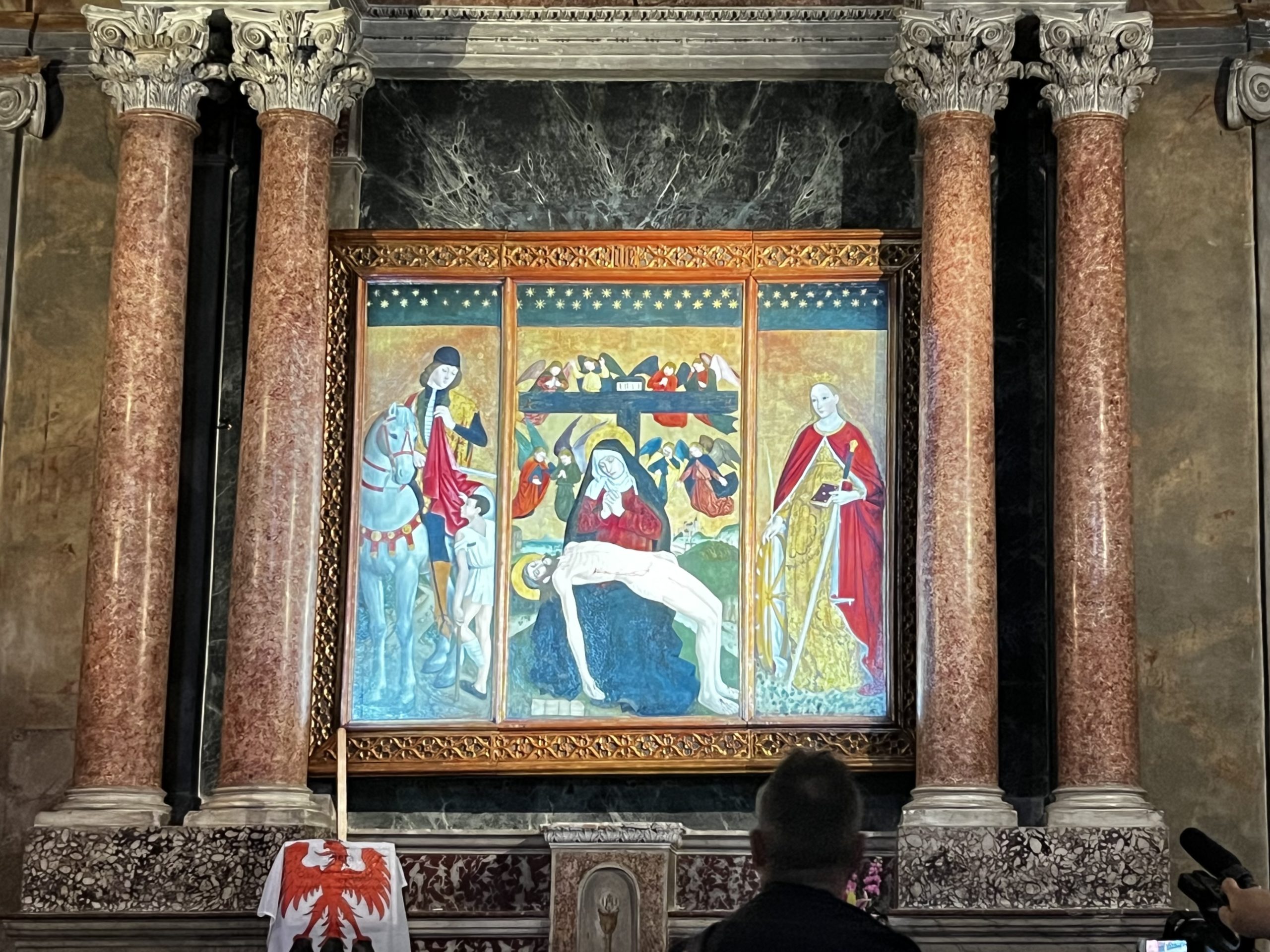This Thursday the unveiling of the painting La Pietà took place at the Notre-Dame de Cimiez chapel.
After four years of diagnostic studies and restoration, the altarpiece of La Pietà by Ludovico Bréa has been returned to the chapel of the Cimiez monastery. “Restoration focuses on the final image, with the removal of various retouches. We experienced some wear because it was damaged over time. But overall, we recovered a painted image that is quite visible,” explains Danièle Amoroso, head of the work’s restorers.
Ludovico Bréa is a Nice-based artist who died in 1523 due to a plague epidemic. He left behind about fifty works, including this restored one, La Pietà. This altarpiece is made up of three panels, a triptych, therefore consisting of a central panel and two movable wings. Saint Martin and Saint Catherine frame Mary, the central figure of the painting, who is shown holding the crucified Jesus on her lap. Ludovico Bréa aimed to depict a Niçoise landscape on the central panel, where the famous hills of Nice can be recognized.
The restorations continue…
The Cimiez monastery suffered significant damage due to severe infiltrations that occurred a few years ago. Ten years ago, the city of Nice began work to waterproof the building. For the next steps in restorations, the mayor of Nice, Christian Estrosi, announced two new refurbishments: “The next two priorities are the refurbishment of the façade of the Cimiez monastery and work inside the church around the high altar.”
Since his first term in Nice, Christian Estrosi has overseen more than 35 renovations of religious buildings, with “the first being the church of the Black Penitents.” These restorations contributed to gaining UNESCO recognition in 2021. “Since 2008, the project was to preserve this heritage, whether movable or immovable. The first thing that is sacrificed and forgotten is religious heritage. Yet it carries an identity, a history that serves as a reference point for us,” asserts Christian Estrosi. The goal for the mayor of Nice is to incorporate 550 hectares of Niçoise heritage into UNESCO’s world heritage.


